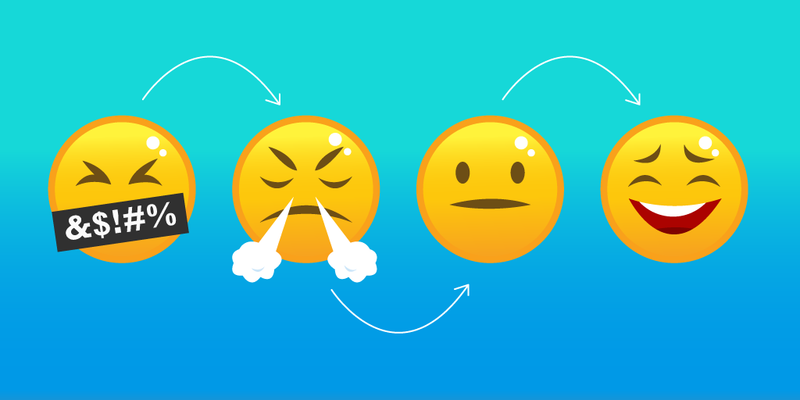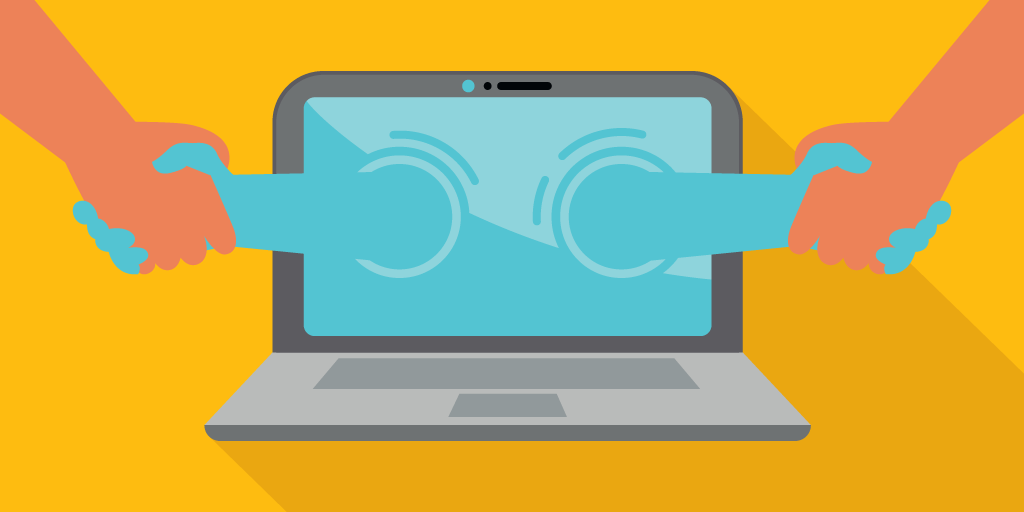Anger is a very human reaction that all of us experience from time to time. (Some of us even do it at this very moment, writing this article.)
But despite it being so commonplace in our lives, we always make it a point to teach about its destructive power. "Anger leads to hate, hate leads to suffering" — all that jazz.
Customer anger, however justified, is not something anyone is looking for. No, not even customers themselves. And the only way to make angry customers, well, less angry is to deliver exceptional customer service.
Why Customer Feelings Matter
Almost all customer service horror stories go the same way: a customer behaves unreasonably angry and instead of looking for compromise, causes chaos and generally makes things worse for everybody involved — and even those uninvolved.
Quite often, we mistake the right to voice complaints for the right to be vocally angry. Plus, what's angry for one person is only one notch above "normal" for other people.
But we need to understand that, even when overblown, anger is usually triggered by something. There are very few people who wake up in the morning with a singular mission to get frustrated with something.
Whether you like it or not, you have to accept that their anger may have something to do with you, the way you conduct business, your product, or your service.
Why even bother with customer feelings? You probably don’t even need us to understand the reason, but just in case: customer feelings and their perception of how well they are treated is one of the chief factors that influence their decision to stay as your customers.
Should you ignore some customer’s angry complaint, you’re risking losing that customer forever. Not only that, you’re risking damaging your reputation in the long run.
A dissatisfied customer will tell 9 to 15 other people about their negative experience. So one angry client of yours can become a patient zero for an epidemic outbreak.
Why Customer Service is an Answer
It doesn't take much to scare away a customer. It's not only about making them angry, but also about making them feel unengaged.
The times we're living in, if you don't like someone's services, you don't have to put up with it. After all, the ocean has a lot of fish to account for every taste.
Losing customers isn't hard, it's making them stay that should be your life's mission. Just like in the game Minesweeper, you can only make one mistake.
That's an exaggeration, of course, as you can roll back some of the damage you may have done — but only to a certain extent. Did you know that, on average, it takes 12 good service experiences to make up for 1 negative one?
So in theory, nothing's stopping you from winning those lost customers back, but it's not exactly a walk-in-the-park kind of scenario.
Also, notice that so far, we've been focusing on getting back your existing customers. Let's talk about why they're so important.
If we talk strictly numbers: The probability of selling to an existing customer is around 60%, while the probability of selling to a new customer is only 5 to 20%. And if that’s not enough, a slight increase of 2% in customer retention produces the same results as decreasing costs by 10%.
The positive effects aren’t only monetary. Retaining customers aren’t just customers who consistently use your services — they are customers who are intimately familiar with them. Thanks to this knowledge, they are the best, and cheapest, business evangelists you could hope for.
None of these benefits can be achieved without investing heavily in customer service — and without alleviating customer anger.
Turn the Frown Upside Down
Better Communication
A word of warning: anger is not always vocal. When you hear the phrase "angry customer", you're most likely imagining a red-faced, bald-headed middle-aged man with a shrieking voice and emotional instability.
In truth, for every customer ready to voice their complaints, there 26 customers who are just as unhappy but don't speak up.
Clear communication with customers is a big part of it, with 68% of churned customers stating they were upset after having spoken with a service agent. That is to say, learn what to say and how to say it.
Better communication can lead you to better understanding your customers, their perception, frustrations, needs, and hopes. In turn, this will lead you to better understanding your service.
And to do that, you need to learn how to ask questions that get you customer feedback. If you want to know what makes your visitors angry — or happy — you need to approach it scientifically.
A neat side effect of providing outlets for self-expression is that customers can vent their frustrations and, depending on how you act, become hopeful that their frustrations will be dealt with. A company that listens to its customers is a company that cares about its customers.
And who would stay angry at such a company?
Personal Experience
If you’ve stuck with our blog long enough, you probably know what we’re about to say here: personalized experience is the shortest path to a customer’s heart.
In the past, people might have considered it enough to simply being serviced and then going on their way. These days, however, customer service is king. A lot of customer frustration is linked to the customers feeling they are being a part of an impersonal, purely transactional process.
In other words, they feel like they are simply moneybags in the eyes of businesses.
The best way of disproving that is tailoring experiences and service to each customer individually. Not necessarily in a big way, as you can simply address your customers by their first name, smile during a conversation with them, and generally provide a feeling that you are on equal terms.
From a psychological standpoint, people tend to be less aggressive when dealing with non-strangers. So don’t be a stranger — make the experience enjoyable for both parties.
A New Approach to Troubleshooting
Look, there’s no way around it: a lot of anger is generally caused by minor, and not so minor, product issues. You can’t exactly blame your customers when they feel frustrated with faulty, buggy products.
Naturally, some of the “issues” that customers may come across are caused by nothing more than their misunderstanding of your product. Then again, it is still your fault: creating sufficient knowledge bases (tutorials, FAQs, help videos) is squarely on your shoulders.
An elegant way to alleviate your customers of their frustration is to let them handle some of the troubleshooting themselves. This may sound backwards at first, but hear us out on this one: already, 73% of customers expect companies to give them the resources needed to resolve issues on their own.
Self-service is the future of customer service, after all: 91% of customers have expressed the need to use a self-service channel, with 84% having used such a channel in the last 12 months.
This stems from a little wisdom called “If you want to do something right, you’d better do it yourself”.
And the result of allowing self-service? Not only your customers manage their own issues, thus getting rid of a lot of anger-causing pain points, they become better advocates of your services. As in, they become even more knowledgeable with how your product or services work, and can help others resolve their issues.
That is not to say that you don’t have to bother doing things yourself, but having a little faith in your customers is totally worth it.
The solutions we talked about here are minor but effective. Just like not every illness requires an invasive surgery, not every business problem requires a straight-up revolution.
Although you start small, trust us — it will be more than just baby steps in your customers’ eyes.






